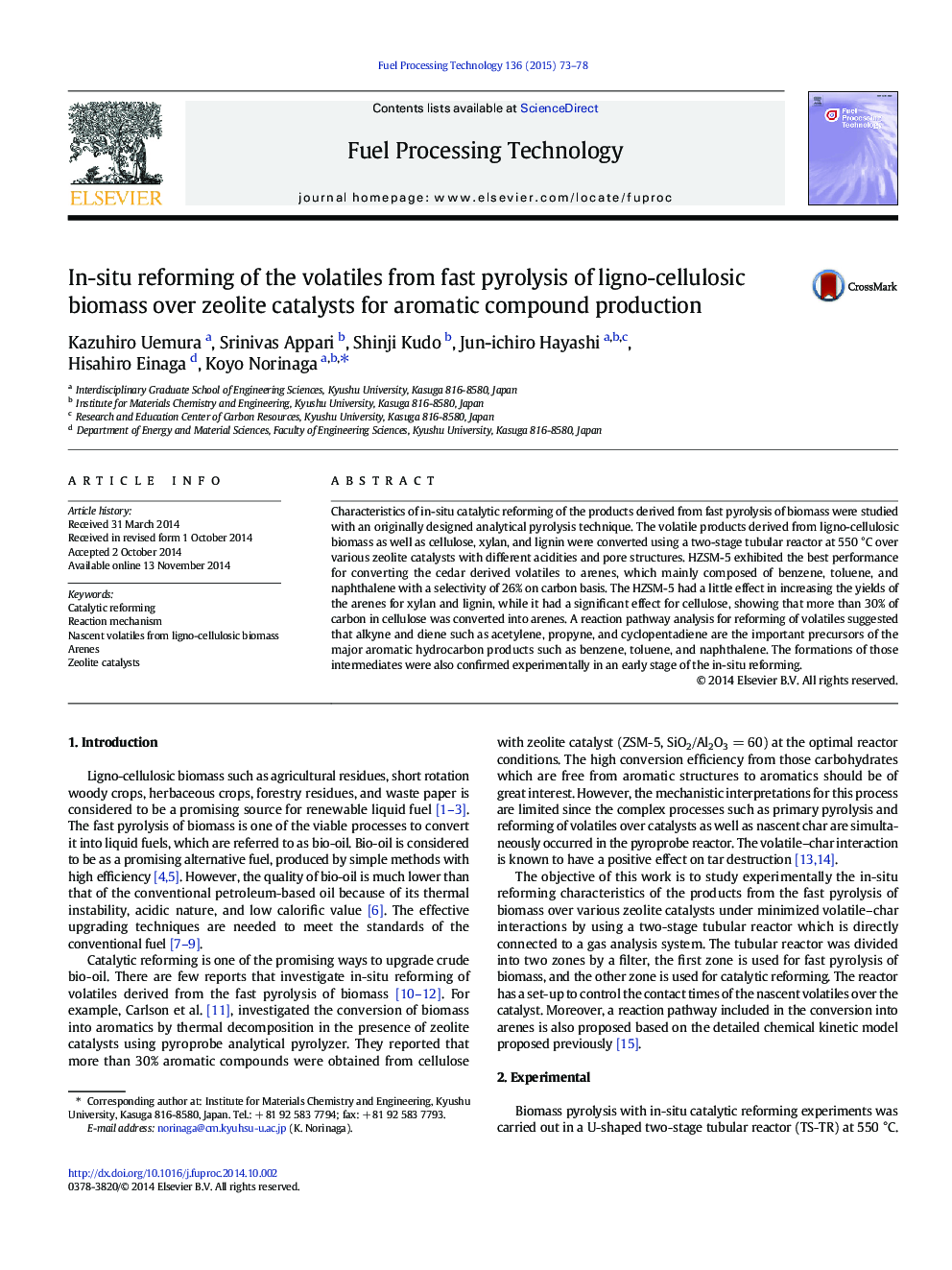| Article ID | Journal | Published Year | Pages | File Type |
|---|---|---|---|---|
| 209578 | Fuel Processing Technology | 2015 | 6 Pages |
•Two stage tubular reactor was used to control contact times of nascent volatiles.•More than 40 compounds were quantified in pyrolysis and reforming.•HZSM-5 exhibited the best performance for converting the biomass into arenes.•Reaction pathway was proposed for arene formation.
Characteristics of in-situ catalytic reforming of the products derived from fast pyrolysis of biomass were studied with an originally designed analytical pyrolysis technique. The volatile products derived from ligno-cellulosic biomass as well as cellulose, xylan, and lignin were converted using a two-stage tubular reactor at 550 °C over various zeolite catalysts with different acidities and pore structures. HZSM-5 exhibited the best performance for converting the cedar derived volatiles to arenes, which mainly composed of benzene, toluene, and naphthalene with a selectivity of 26% on carbon basis. The HZSM-5 had a little effect in increasing the yields of the arenes for xylan and lignin, while it had a significant effect for cellulose, showing that more than 30% of carbon in cellulose was converted into arenes. A reaction pathway analysis for reforming of volatiles suggested that alkyne and diene such as acetylene, propyne, and cyclopentadiene are the important precursors of the major aromatic hydrocarbon products such as benzene, toluene, and naphthalene. The formations of those intermediates were also confirmed experimentally in an early stage of the in-situ reforming.
